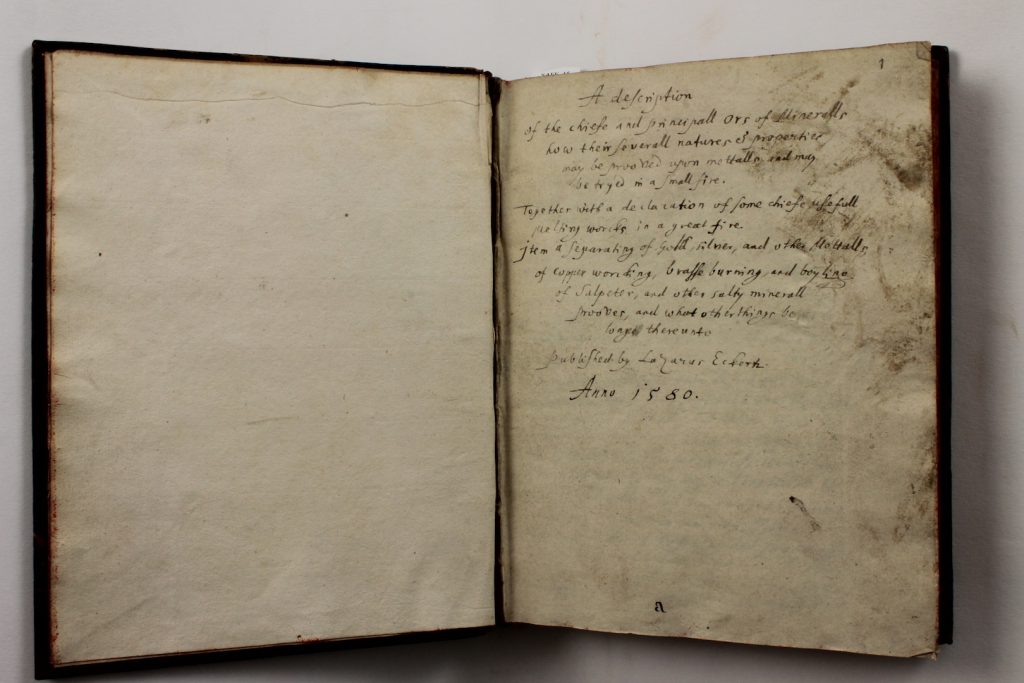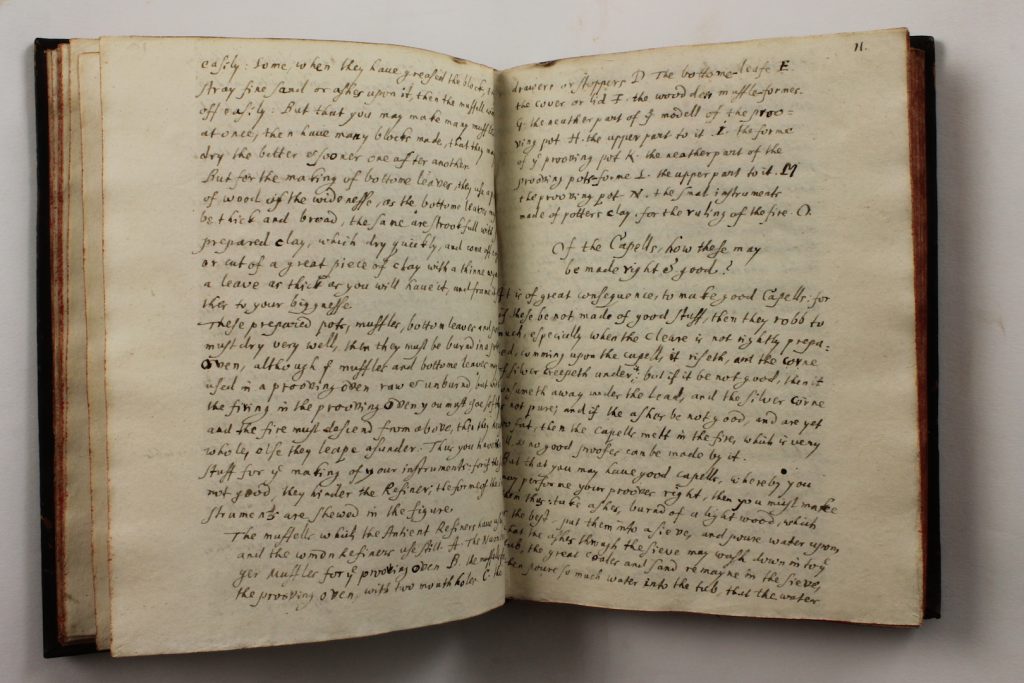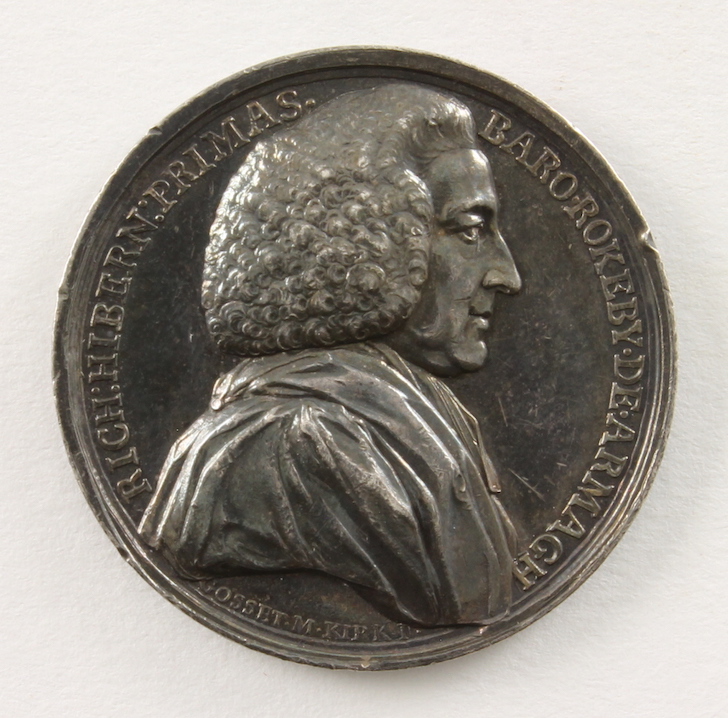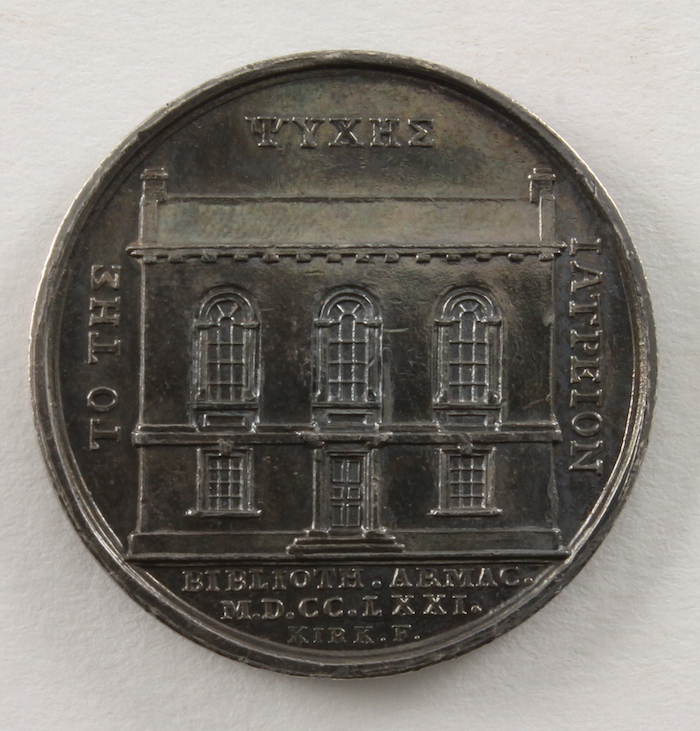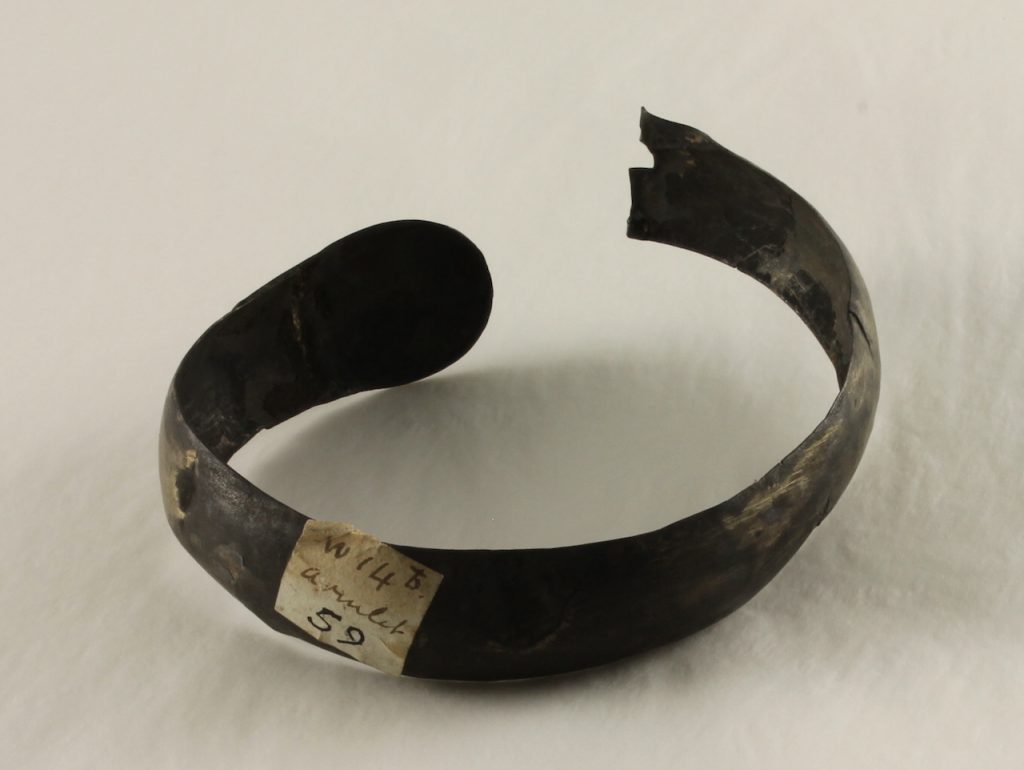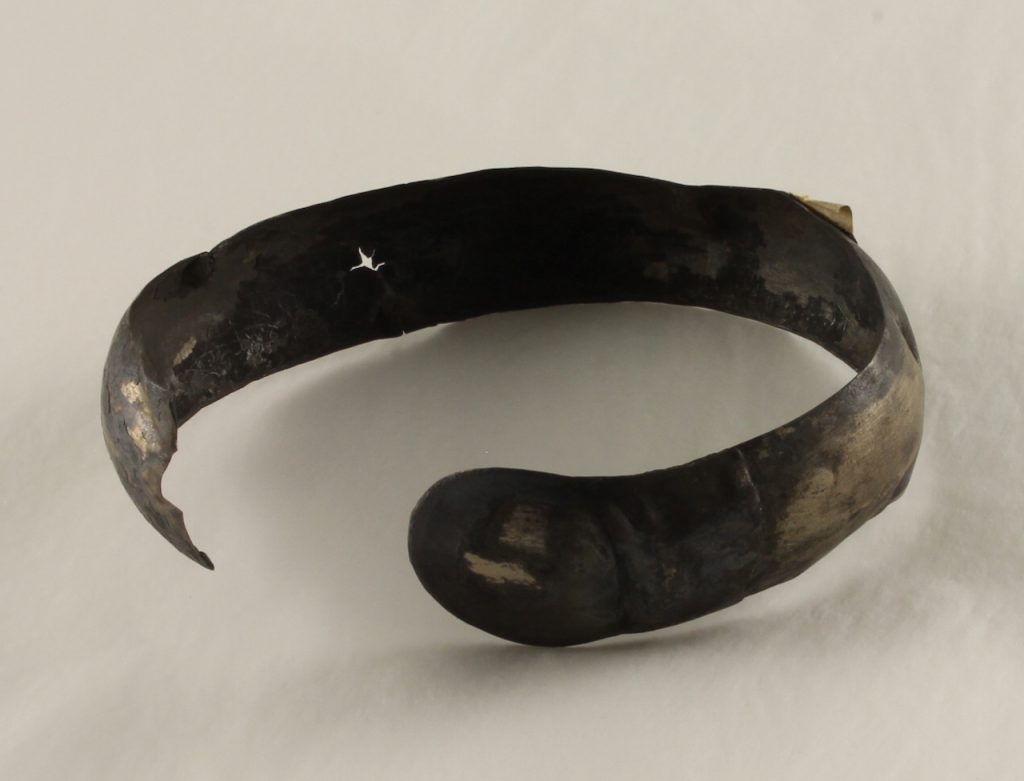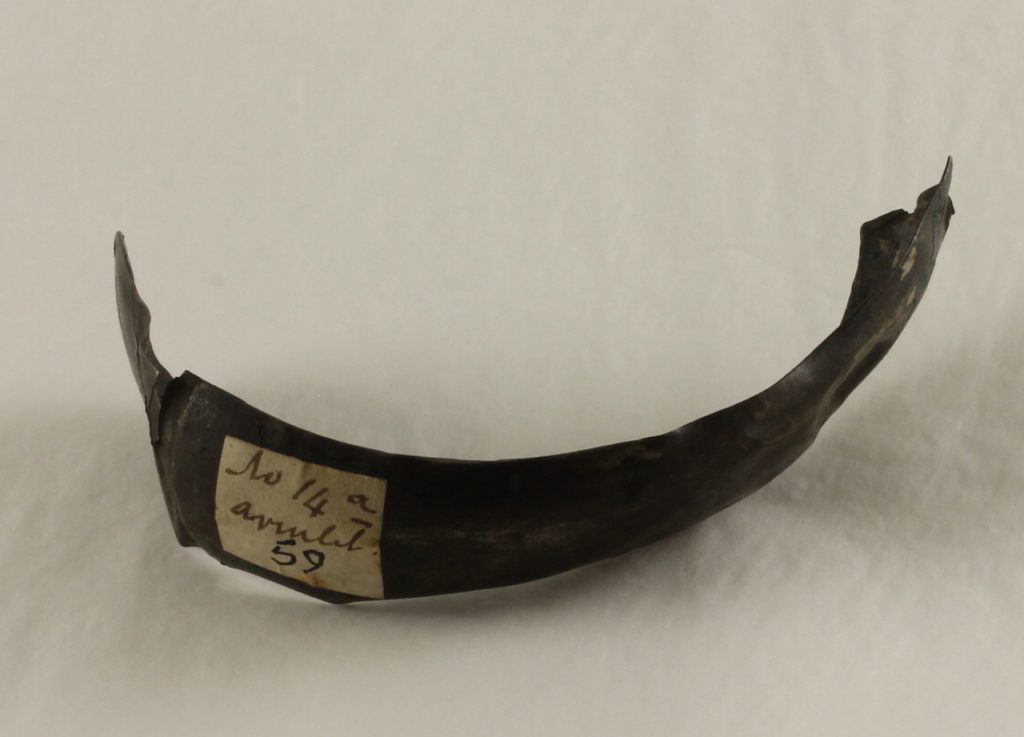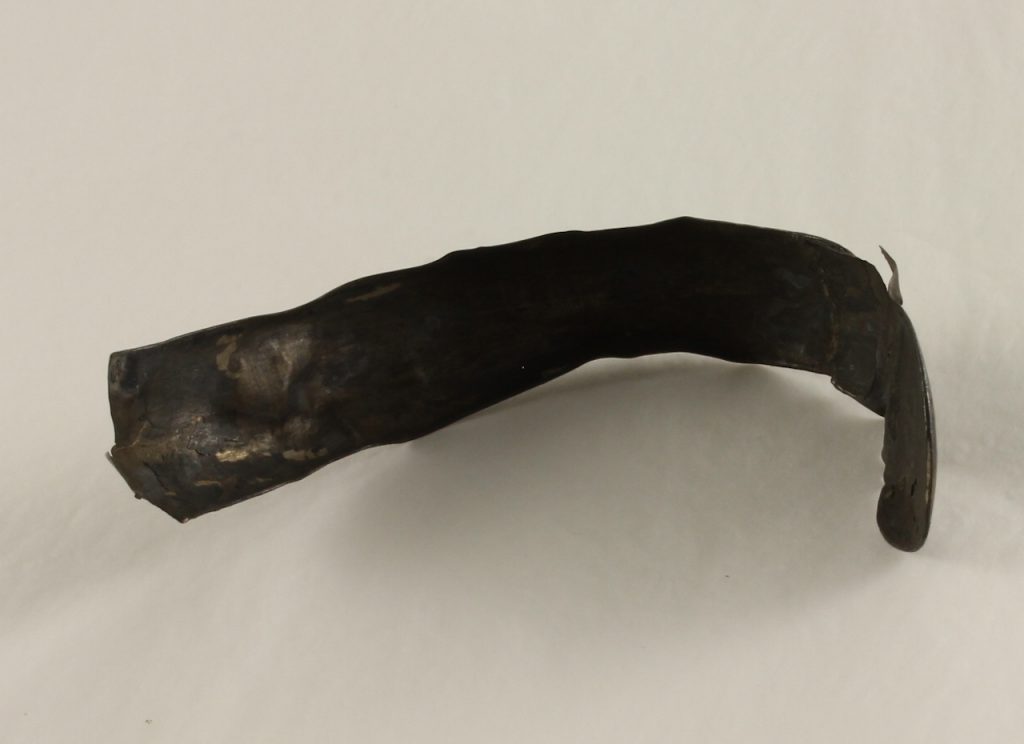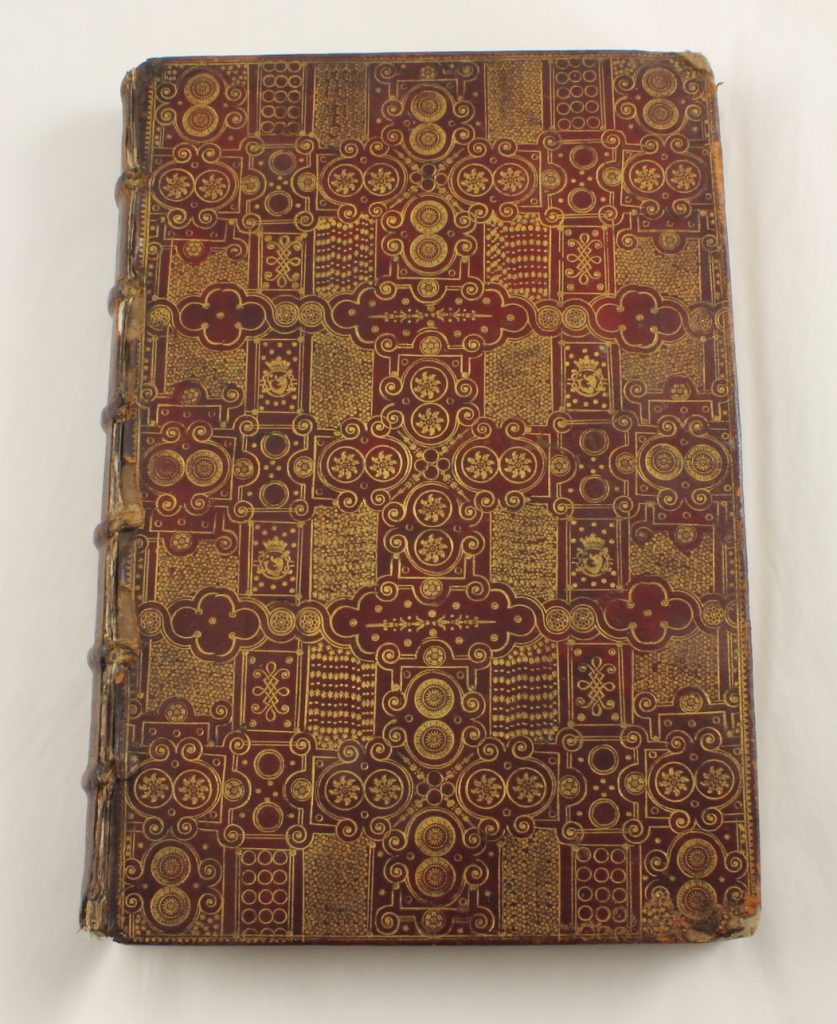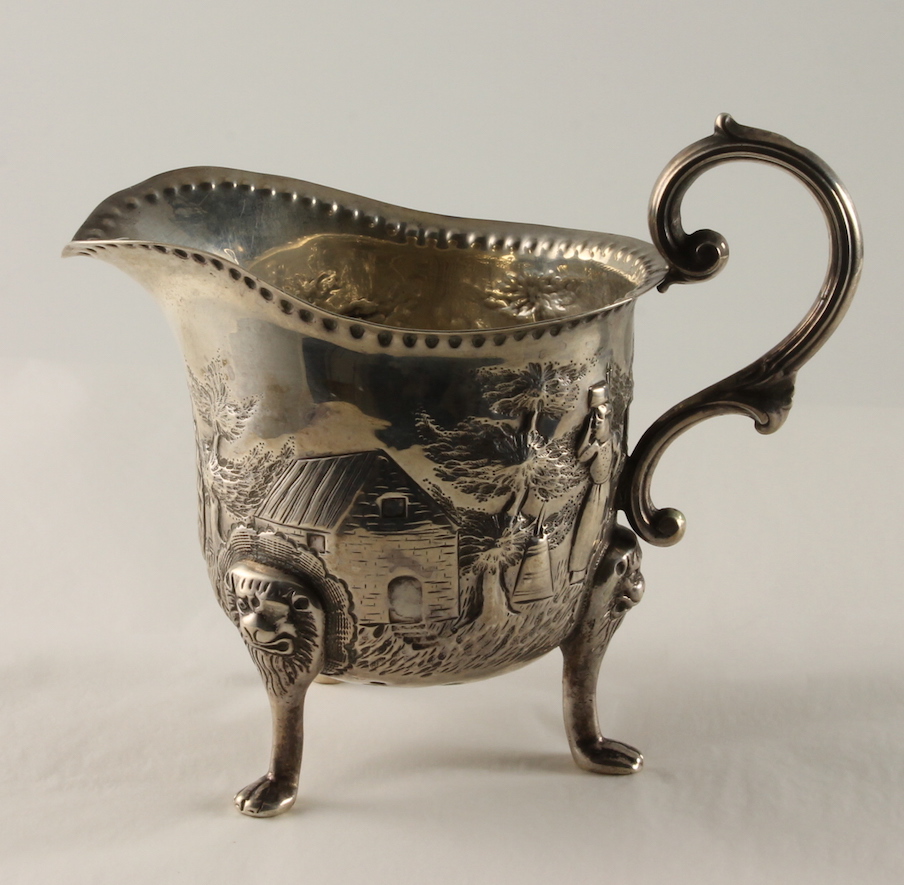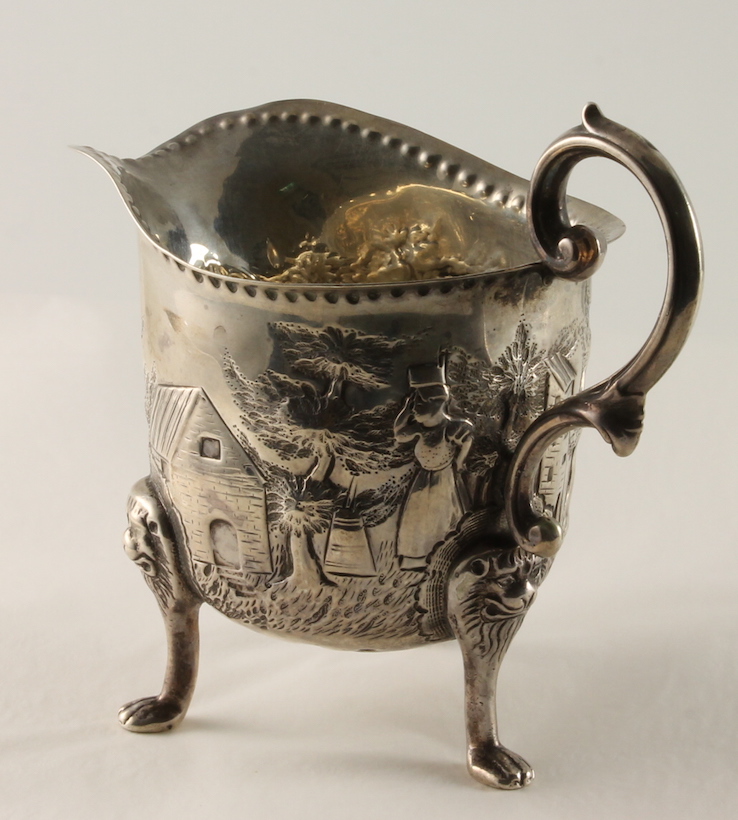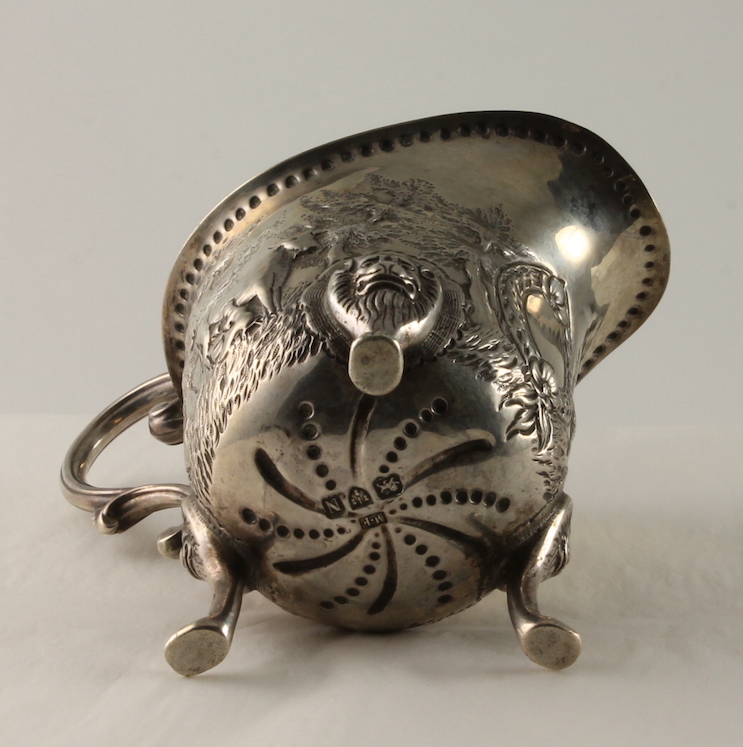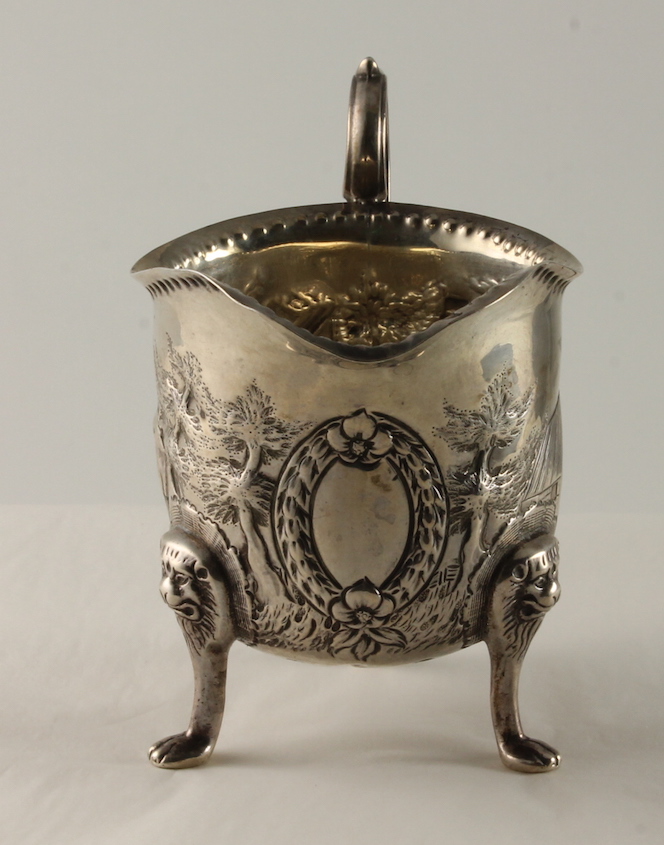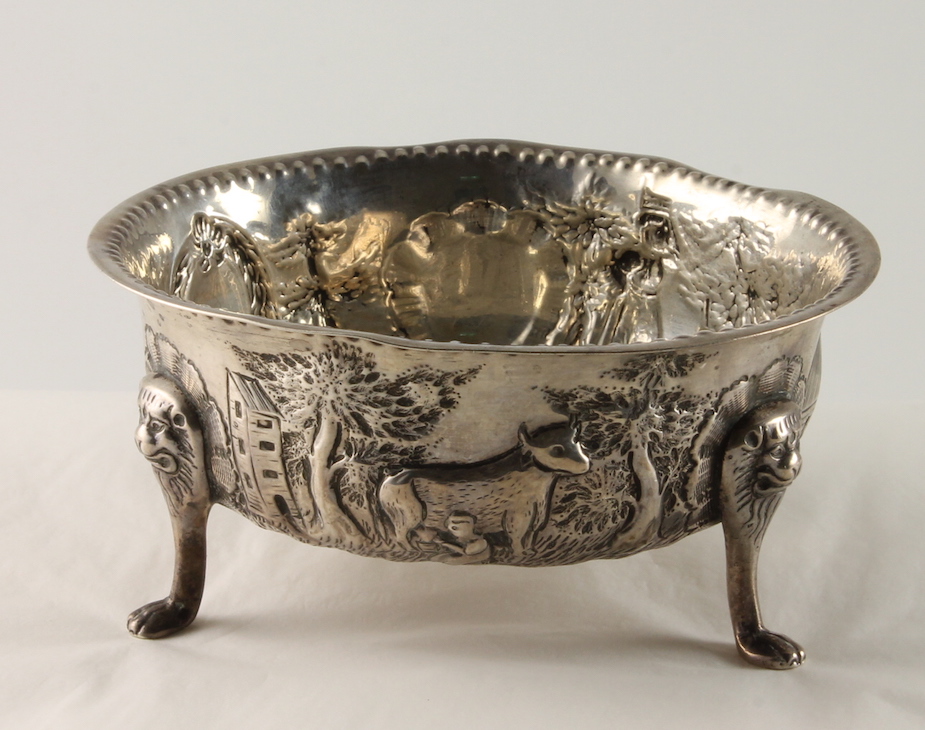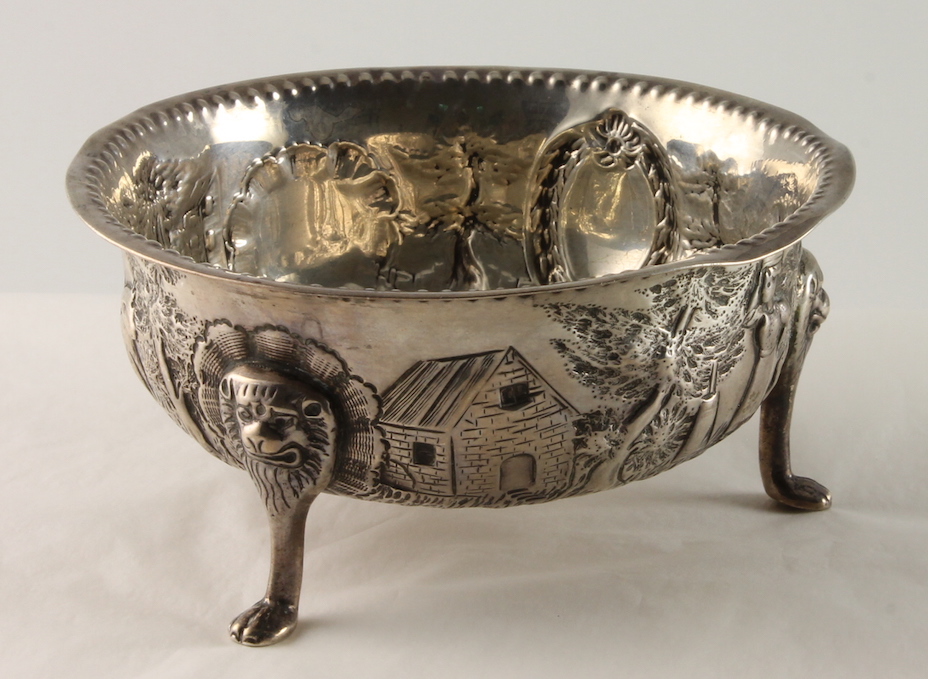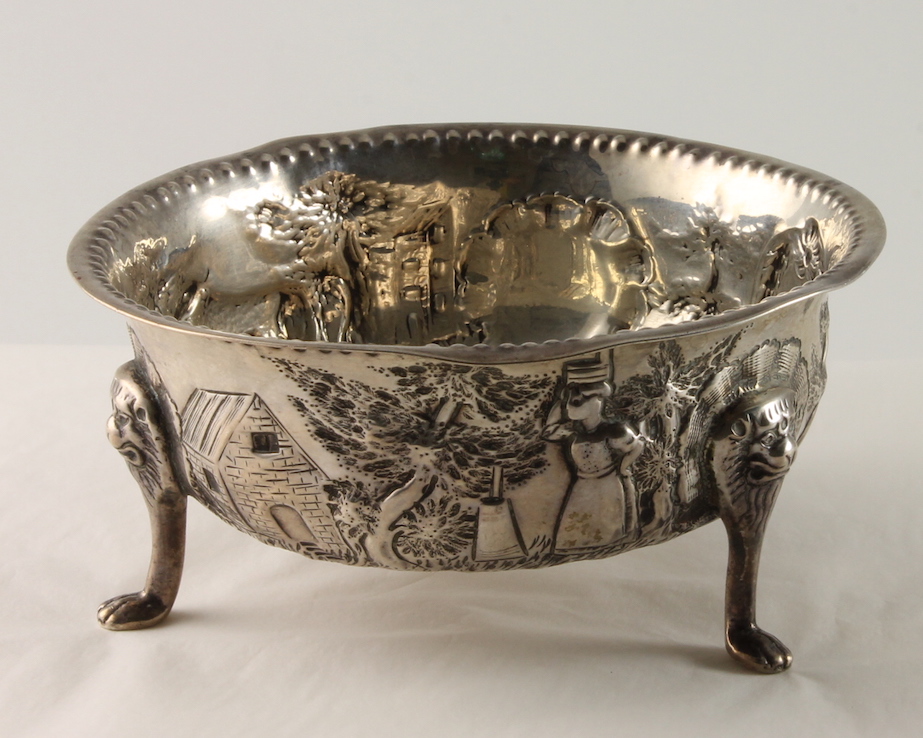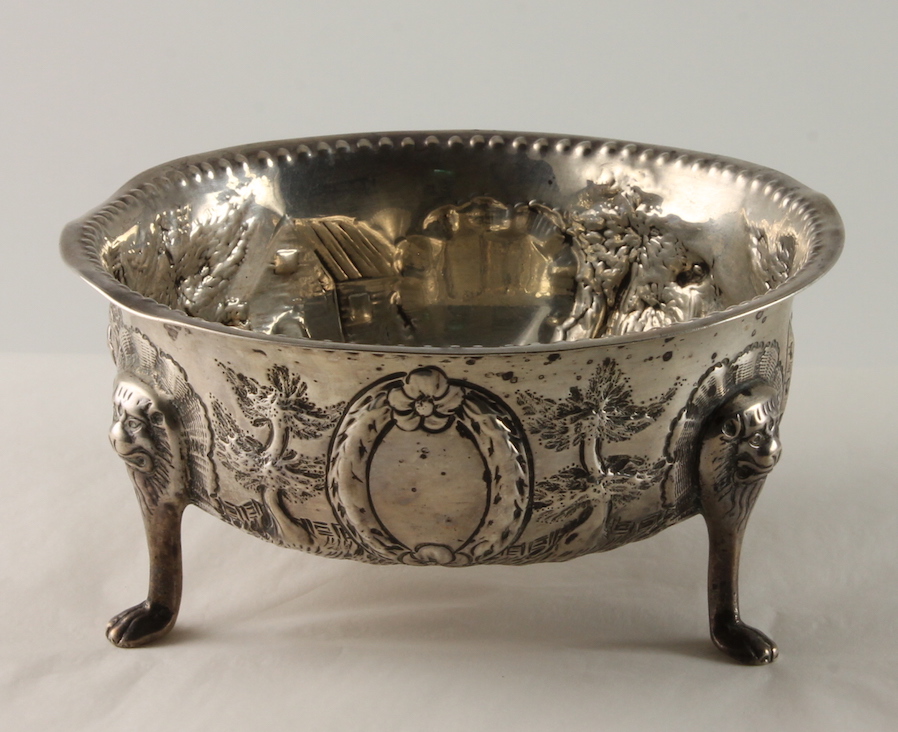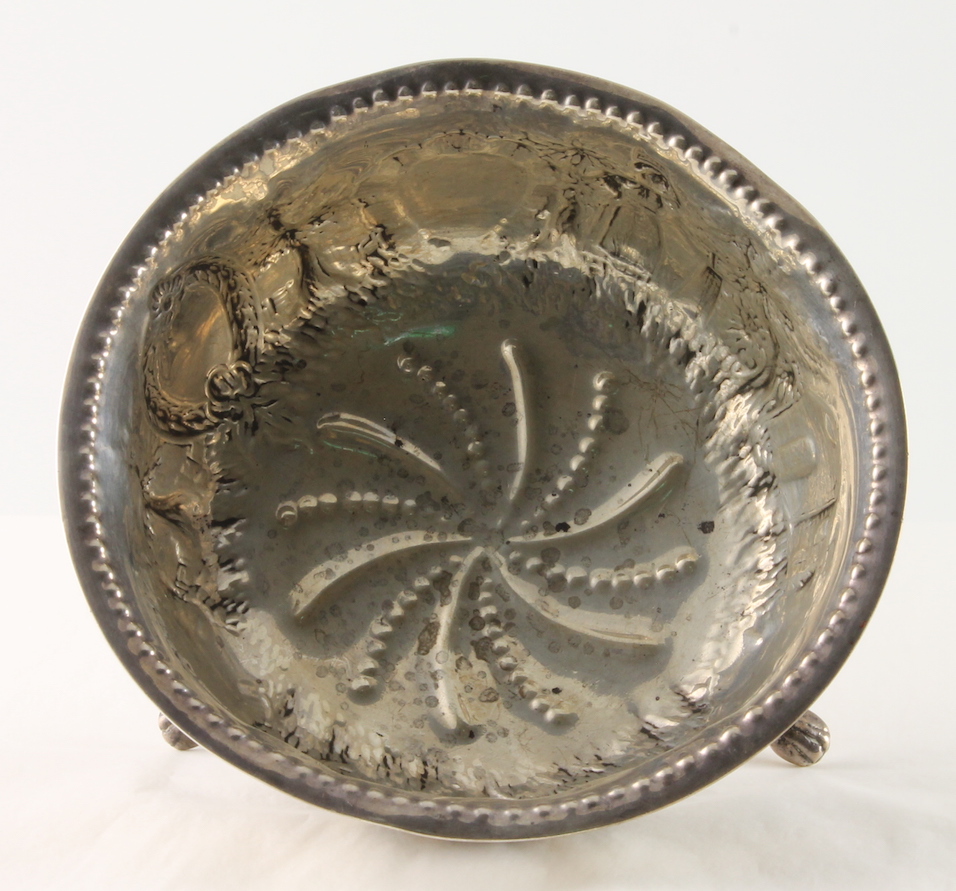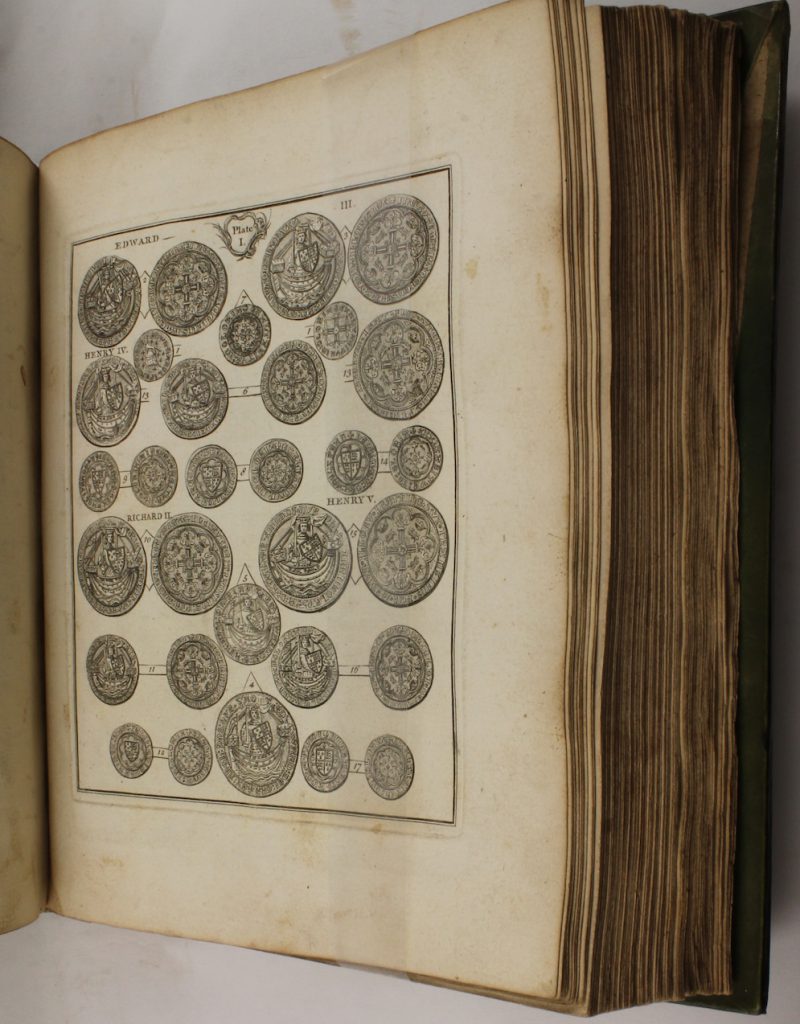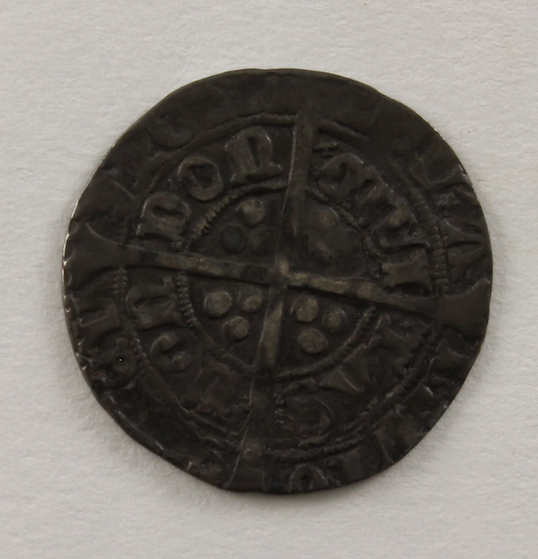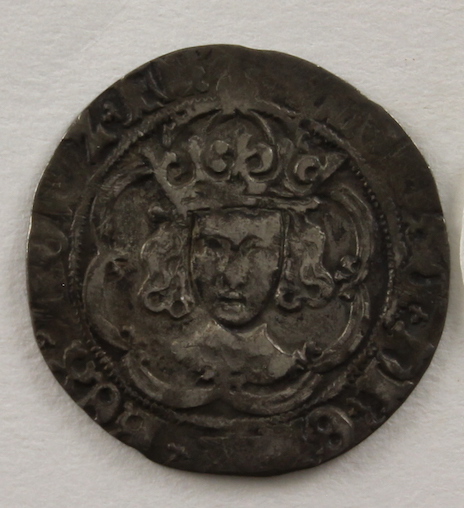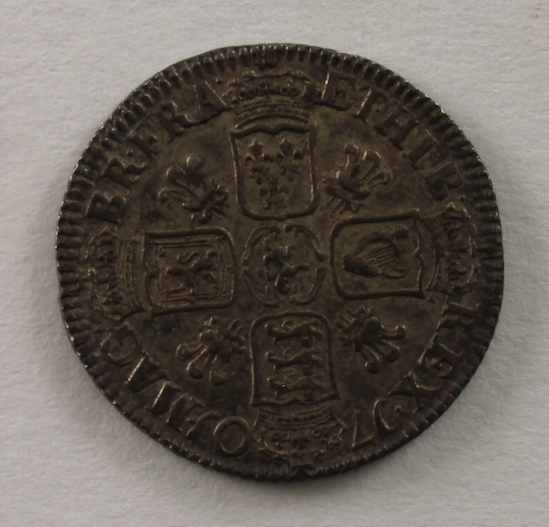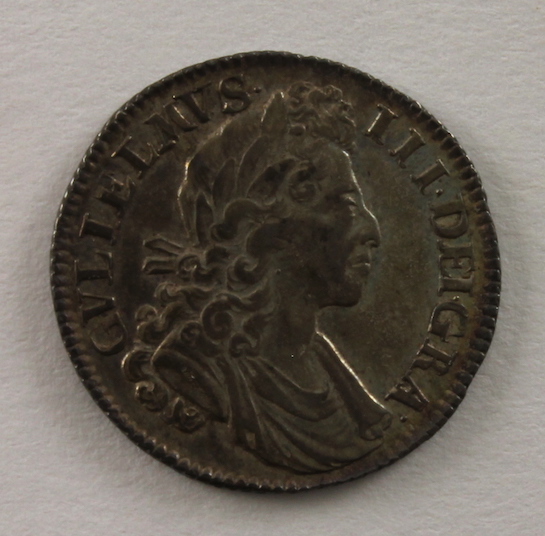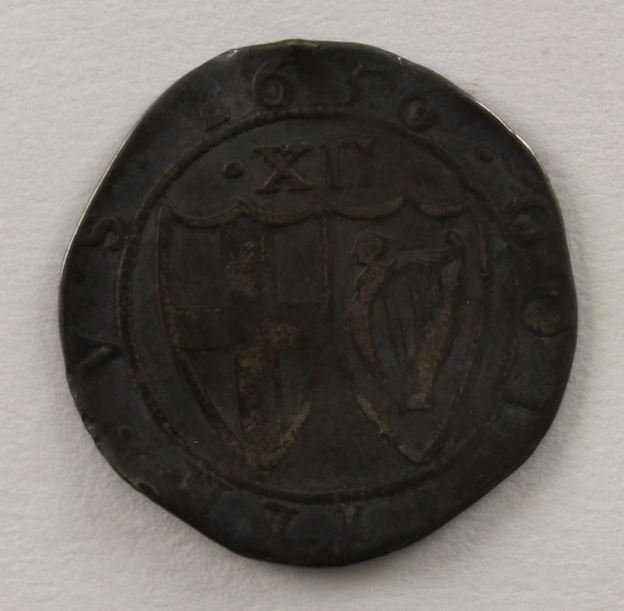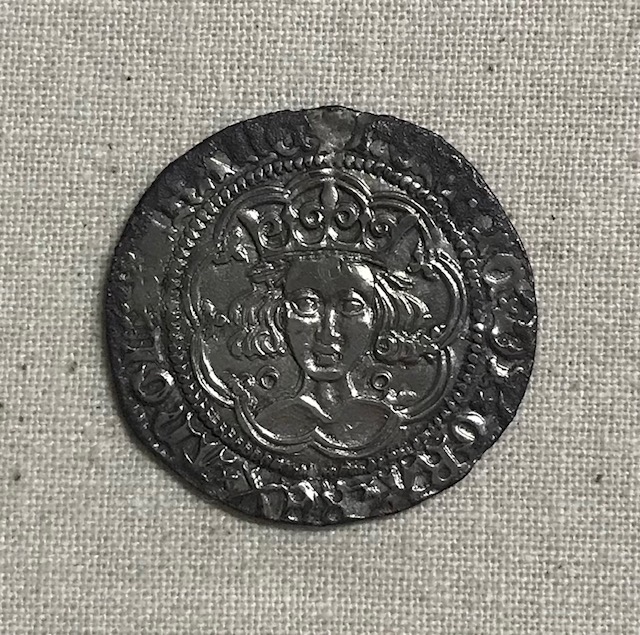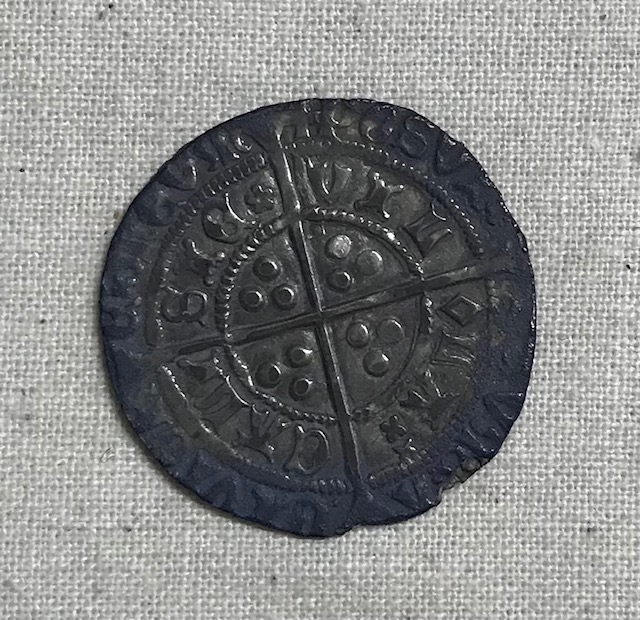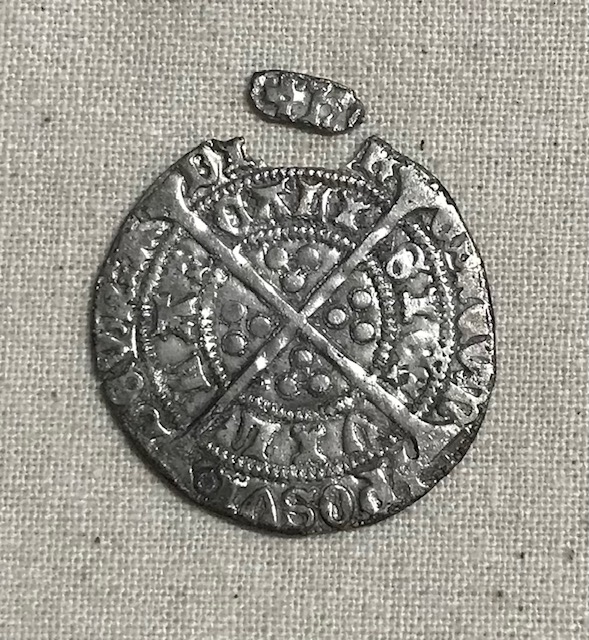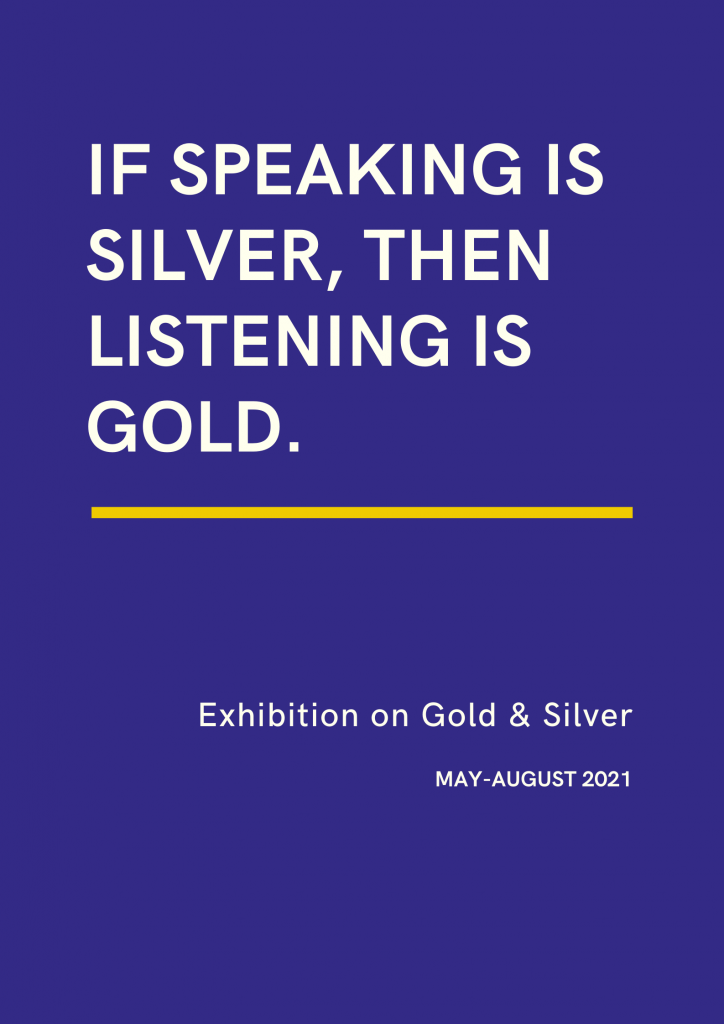
This exhibition on silver and gold is part of the year’s celebrations to mark the Library’s 250th anniversary.
It also acknowledges the support of the Goldsmith’s Company for the Endowment Appeal.
If speaking is silver, then listening is gold.
Turkish Proverb
For over 6000 years silver and gold have been used for many different purposes. Money, jewellery, ornaments and eating utensils, amongst others, have been made from these precious metals.
In this exhibition we highlight both silver objects, as well as books on silver and gold from the Library’s collections.
Click on the carousels to see the full image
A Description of the Chief Principall Ors of Mineralls, How their Severall Natures & Properties May Be […] Upon Metals and May Be Tryed in a Small Fire[…] Lazarus Ercker 18th Century P001942685
This 18th Century manuscript is an English translation of the 1580 German publication Beschreibung allerfürnemisten mineralischen Ertzt vnnd Bergkwercks Arten […] By Lazarus Ercker.
In this section, Ercker explains the process of cuppelation: a refining process where alloyed metals are heated to very high temperatures
in a cupel, a shallow, porous container, to separate precious metals, such as gold or silver, from base metals.
Master of the Mint in Prague, Ercker wrote several books on metalworking and these were often used as text books for European mining schools and academies.
Essay On Gold and Silver-Coin Currant In Ireland. By Mr. Bindon Francis Bindon Dublin, 1729 P001331120
In the 1720s Ireland suffered from an imbalance in the value of gold and silver coinage in use. Gold had been structurally overvalued and silver coinage undervalued. Whenever there was a trade imbalance, bankers and merchants would buy up silver coins in Ireland and exchange these in England.
Bindon argued for the adoption of proportional value of gold to silver, as was found in England. He hoped this would bring an end to the outflow of silver coins.
In his pamphlet on Irish currency, David
Bindon went on to argue that different coins (including copper ones) had different uses and should therefore have different values.
Whether, all things considered, it would not be better for a kingdom that its cash consisted of half a million in small silver rather than five times that sum in gold?
An Introduction to the General Art of Drawing‚ Wherein Is Set Forth the Grounds and Properties, Which of This Infallible and Judicious Art are Necessary to Be Known and Understood. Being Not Only Profitable Unto them That Practise Drawing; Viz. Picture-Drawers, Engravers, Carvers, Stone-Cutters, Jewellers, Goldsmiths, Silversmiths, &C […] Willem Goeree London: 1674 P001188042
An Introduction to the General art of Drawing aimed to teach the art of drawing to a wide audience. It also pays special attention to those in training for the applied arts, such as goldsmiths and silversmiths.
The page shows the basic techniques on how a face, such as on the silver medal in the next case, should be drawn.
Commemorative medal for the opening of the Armagh Public Library in 1771 John Kirk, Manufacturer (1724 - 1778); Isaac Gosset, Artist 1771 2020.1
This silver medal was commissioned to commemorate the opening of the Library in 1771. It was designed by Isaac Gosset and manufactured by John Kirk.
The bust of Archbishop Richard Robinson is displayed on the obverse and the original facade of the Library with its three bay windows on the reverse.
In 1789 a similar medal was issued for Armagh Observatory, another significant Armagh building and institution founded by Archbishop Robinson. This medal was manufactured by Dublin-based medallist William Mossop.
Silver armlet Marcus Gervais Beresford, collector 500-700 BC 059
This silver armlet is thought to be from the Late Roman period, which indicates the transition from the classical period to the Middle Ages.
The armlet is part of our Beresford collection, put together by Marcus Gervais Beresford, who was Archbishop of Armagh between 1862 and 1885.
Further examples of the archaeological finds are on view in the cabinets on the window side of the Library, near the spiral staircase, and in No 5 Vicars’ Hill.
Tractatus Super acta apostolorum Comment, in actus apostolorum Rabanus Maurus 1200-1225 P001941654
This 13th Century work by Rabanus Maurus is a fine example of an illuminated manuscript.
An illuminated manuscript is a manuscript where the text is decorated with elaborate initials, borders and illustrations. In the strictest sense of the word, the decoration should contain a metal, often gold, in order to illuminate, to bring light by reflecting surrounding candlelight.
Two forms of gold can be used to decorate: gold leaf, which would be hammered extremely thinly, or shell gold, a paint tablet, made by mixing gold powder with gum arabic or egg. It was given its name as traditionally these tablets were stored in shells. A damp brush would be applied to the tablet to extract the paint.
Usually, details were painted with shell gold, while larger areas were gilded by using gold leaf.
I Quattro Libri Del L'architettura Andrea Palladio, author Venice, 1570 P001393207
This red binding shows some wonderful gold tooling and edging, processes used by a bookbinder to decorate a leather, paper or cloth binding.
Gold tooling is the process of lettering or decorating a binding by impressing gold leaf into the material with heated metal tools.
First, the lettering and decorations is blind tooled into the surface, that is, impressed into the binding material with a heated tool, but without gold leaf. Then an egg white adhesive is applied to the blind tooling and left to dry.
Next, gold leaf is placed over these areas and the same heated tools impress the gold leaf into the blind tooled areas. The heat reactivates the adhesive and bonds the gold leaf to the binding.
Edge gilding is the process of decorating the outer edges of the book with a metallic foil.
First, an adhesive is applied along the edge of the surface and left to dry. Next gold foil is placed on top, and a heated roller is then rolled along the edge to reactivate the glue and bond the foil to the edges. The unused foil is then removed.
Set of Silver Creamer and Sugar Bowl Montague Friedlander, Artist; Friedlander & Co, Manufacturer 1896 P002471376
This silver creamer and sugar bowl set was presented by Lord Charlemont to Dr Thomas Osborne Marks, for for 42 years of service as organist of St Patrick’s Church of Ireland Cathedral.
In the 1930s the Marks family moved to 7 Vicar’s Hill, two doors from where currently No 5 Vicars’ Hill is located. The set was in use until 1991 and was donated to the Library in 2009 by the grandson of Dr Marks.
Tables of English silver and gold coins: First published by Martin Folkes, Esq; and now re-printed, with plates and explanations, by the Society of Antiquaries, London, MDCCLXIII. Martin Folkes London: 1763 P001216976
Tables of English silver and gold coins documents the coinage from the Norman period up to the end of Queen Anne’s reign, from 1066 to 1707. Each monarch is listed in chronological order and the history of the coinage described in great detail, including weights, measurements and pictures.
The author of the Tables, Martin Folkes, was an English mathematician and scholar, who wrote on both classical and English coins.
Henry VII, groat London, 3rd coinage, 2.771 gr 1490 – 1507 APL 16
William III, shilling Milled, 5.974 gr 1701 APL 43
Commonwealth Shilling 5.441 gr 1656 APL 38
The Library’s founder, Archbishop Richard Robinson, had a keen interest in numismatics, the study of currency.
He collected a large number of coins, including Roman, Scottish, English, Irish, Greek and Portuguese pieces with varying dates and denominations.
Henry VI Groats, Annulet issue, Pierced Cross Minted Calais, 1422-1427 Found Tynan, Co. Armagh ca 2010 Object nos 2021.1.1 & 2021.1.2
These two coins are part of a recent donation of six silver groats from the reign of Henry VI.
The six groats, fourpence coins, were found in a woodland near Tynan, Co. Armagh around 2010.
Two things are unusual about the groats:
- The groats are not clipped, i.e. the outer edge was not removed. Clipping was a common practice to devalue coins and to prevent them from being spent abroad.
The groats were found in an area far outside the Pale, the part of Ireland directly under the control of the English government at the time. The Pale stretched from Dundalk to Dalkey along the coast, and inland included Naas, Leixlip, Trim and Kells.

